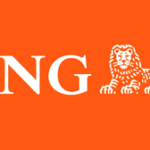Earning passive income right now from your investments and savings portfolio is still very doable, of course, in 2024. we’ll be looking over a variety of different options of high return investments for you to choose from in the current market that’ll provide your cash holdings and investments with either passive interest income or dividend income depending on the position in question where There are quite a few options that can fit different risk tolerances and investment strategies so let’s get started.
Where to Get the High Return Investments Returns in 2024
Here’s the 4 options to earn the highest interest returns pn your savings and investments in the current market environment.
1. HISA
The simplest way to earn some passive income on your cash holdings is one that most people are aware of, being through earning interest on the cash that’s sitting in your bank account, hopefully, a high-interest savings account rather than your checking account earning 0.01% interest.
Now, I’ve highlighting some of Canada’s best savings accounts and rates at those given times, which is one of the downfalls of high-interest savings accounts as their interest rate is generally dependent on the prevailing rate set by the Bank of Canada that’s in constant movement. As we speak, though, in June of 2024, interest rates are still quite high due to the economic climate here in Canada, even though they have just been cut by 0.25%.
Nonetheless, this means that interest rates on savings accounts and other fixed-safe investments are still relatively attractive, presenting an opportunity for those looking to earn a stable and reliable return on their cash holdings. There are several options in Canada right now. In fact, here are some of the top options available with their current promotional interest rates that I’d recommend you look into further if you’re interested, but let’s cover some of the pros and cons of high-interest savings accounts starting with the benefits.
So opening and setting up a high-interest savings account is one of the simplest and easiest-to-understand ways to earn a return on your cash, and it offers relatively high liquidity on your cash as well, so if you’re in need, you can easily access those funds. Finally, automatic interest deposits are made into your account, usually on a monthly basis, depending on the daily amount in your account, which is then relative to the yearly interest rate.
Of course, though, well, for the pros, interest rates do fluctuate over time, and good rates are usually only for a short duration of time. In Canada, most promotional rates are for three to six months, and then they’ll drop down to a lower rate afterwards, which usually isn’t all too competitive.
The second con here is that the best rate is generally not with your current bank and is only for new customers at a different bank, so switching high-interest savings accounts for only a temporary interest rate can definitely be a hassle that may not be worthwhile. And finally, interest income isn’t taxed favorably like dividend income and will be added to your regular taxable income as well, so that’s also something to consider.
2. HISA ETF
Let’s now take a look into the second option, which is to earn interest income on your cash holdings while being able to do so through an investment account with favourable tax treatment. High-interest savings ETFs are yet another compelling investment option for those looking to earn a stable best return on their cash holdings while maintaining a higher level of liquidity than other types of equity investments.
So these ETFs invest in a variety of high-interest savings accounts and short-term fixed-income securities offering yields that are typically higher than traditional savings accounts over a longer period rather than only for a short promotional period with the added benefit of being easily tradable on a stock exchange providing investors with a higher level of flexibility.
What’s more, is that interest payments from these ETFs are typically distributed on a monthly schedule as well, just like high-interest savings accounts, making them an attractive choice for individuals who may be seeking that regular income without having to lock in their funds into a longer-term commitment like a GIC for example.
You can hold these positions in a variety of investment accounts, including, say, the TFSA or the FHSA, making that dividend income that you’re going to be receiving from said ETFs completely tax-free, which is quite advantageous compared to the interest received on your high-interest savings account that as we looked over earlier is added to your taxable income.
So here are a couple of high-interest savings account ETF options to look into further that currently offer some competitive yields in the market, and let’s now cover the pros and cons that these ETFs offer investors. Starting with the pros, Heise ETFs generally offer higher but also more stable interest rates compared to those traditional savings accounts, providing an averaged-out interest rate across the market that isn’t subject to short promotional periods.
The second pro is that these ETFs are easily tradable on stock exchanges, allowing investors to buy and sell shares quickly, which provides greater flexibility compared to fixed-term deposits like GICs. Finally, interest is typically paid out on a monthly schedule, providing a steady stream of income that can be useful for covering monthly expenses or simply reinvesting back into your portfolio if that’s what you’re after.
Diving now into the cons, well, although they are relatively low risk, Heise ETFs can still, of course, be subject to market fluctuations and interest rate changes across the board, which may impact the rate that you’re receiving on your invested funds.
The second thing to look out for is that management fees and other expenses associated with ETFs can eat into your returns, making them slightly less attractive than directly holding in a high-interest savings account; however, the fees for most of these Heise ETFs are on the smaller side. And finally, while they can offer higher interest rates than traditional savings accounts over a long term averaged out well, the returns from Heise ETFs are generally lower compared to growth-oriented investment options like equity ETFs, but that’s the idea behind the Heise ETF anyway.
Alright, so we’ve now looked over high-interest savings accounts and Heyse ETFs, but what about an ETF option that focuses on investing in short-term debt instruments and cash equivalents to create a return on your investment?
3. Money Market Fund
These ETFs aim to provide investors with a safer place to invest easily accessible cash while generally offering a return that’s going to be slightly higher than a traditional savings account. And just like with the Heise ETFs or any other ETF for that matter, money market ETFs trade on stock exchanges like individual stocks, allowing investors to buy and sell shares throughout the trading day at market prices, which is why they’re popular among investors seeking liquidity stability and some income.
In fact, here’s an example of a Canadian money market fund offered by iShares where you can see that the fund’s share price hovers around $50 with fluctuations in share price relative to the dividend distribution each month when the dividend is issued and the reason why the fluctuations are greater now and back in 2008-2009.
if you’re interested in finding some of these money market ETFs in your stock brokerage, well, here’s how you can easily do so using the Moomoo application. So, just like finding any other ETF that you might be interested in, going into the market tab and searching for said money market ETF will bring you directly to the stock quote for that ETF.
Otherwise, you can also find similar ETFs by looking in the markets tab and going into the section that pulls together various exchange-traded funds based on their investing style and certain characteristics. So, that’s an easy way to find similar money market funds in the Moomoo app. Let’s now talk about some of the pros and cons of using a money market ETF.
Starting with the pros, money market funds invest in high-quality short-term instruments, which makes them relatively safe and stable compared to other investment options, especially dividend-focused equity ETFs, and they’re designed to preserve capital while providing that slight return. Second, these funds offer high liquidity, allowing investors to quickly access their money when needed, making them ideal for managing cash and maintaining an emergency fund if that’s what you’re after.
Finally, due to their focus on those short-term lower-risk securities, money market funds typically experience lower price volatility, which helps in maintaining a stable net asset value, as we looked over on the stocks chart.
That being said, there are, of course, a few downsides, notably that the safety and stability of the money market fund come at the cost of those lower returns compared to many other investment options, meaning that over time, the returns may not keep pace with inflation however right now money market funds are a great way to earn some passive income and the goal of these funds is never to grow the capital invested in the first place anyways.
Second here, although generally low money market funds do charge management fees, it is important to take a look at the MERs charged by the ETF provider. In the case of CMR that we spoke about earlier, we’re looking at 0.13%, which is very low.
Finally, money market funds are sensitive to changes in interest rates, so when interest rates are low, the yield on these funds can be very modest. Still, like with all of the investing options that we’re looking at today, these are options that are currently offering nice passive income due to the current market conditions right now.
4. Dividend ETF
In fact, Moomoo provides investors with the ability not only to gain thorough data relating to the individual stocks or ETFs that you’re researching but also access advanced trading tools and comprehensive market analysis data built right into the platform at no extra charge to you as it’s the only Canadian broker that offers free for users real-time level 2 market data for US and Canadian stocks.
Unlike other online brokerages that charge up to 90 bucks a month for these same professional features, Moomoo has no subscription fees, no minimum deposit requirements, and no account management fees. Now, suppose you’re looking to discover ETF options that provide dividend distributions or with other specific criteria.
In that case, you can easily do so in the market tab of Moomoo’s app and then click on thematic ETFs, where they’re categorized ETFs based on criteria such as, say, monthly distributions and more. Once you’ve found an ETF that you may be interested in investing in well, you can easily access the latest news and data relating to it, including fund information, position details, management fees, and much more, allowing you to make a more informed investment decision.
What’s more, is that Moomoo has now introduced RSPs and TFSAs to their lineup of available accounts with no minimum account fees or balances to get started.
If you deposit $5,000, you can get $100 back right away, but that’s really only if you’re depositing funds if you choose actually to transfer your account. If you transfer $100,000 or more from another stock brokerage, you can receive an Apple gift card worth $1,200, which is enough to buy a brand-new iPhone.
Finally, we can’t forget dividend-focused equity ETFs that, despite nice passive returns currently offered by many interest-focused positions like what we just covered, can still remain viable options for both capital growth and dividend income.
These ETFs typically target more established and financially stable companies across various sectors, including usually the utility sector, consumer staples, and healthcare, which are known for their reliable dividend payouts.
We’ve covered quite a few dividend ETFs, but some options to look into right now include some of the following ones that are on screen. Some of the key benefits of dividend-focused equity ETFs include the following: come generation is one of the main courses.
These ETFs provide a steady stream of income through those dividend payments, which can be particularly appealing for reinvesting back into your account, thus growing it at an exponential pace, or investors may seek regular cash flow to supplement other areas of their finances.
Additionally, while generating income, dividend-focused equity ETFs also have the potential for that capital growth as the investment companies that may appreciate over time, and this is in contrast to basically the three other options, where you’re not really looking at any underlying capital appreciation your investment return is strictly from the interest earned on the investment.
Finally, investing in a dividend-focused ETF generally provides exposure to a diverse range of dividend-paying companies across those various sectors, reducing the overall risk associated with investing in a single individual dividend stock.
Despite their focus on dividends equity, focused ETFs are still subject to market volatility, of course. The value of the underlying stocks can fluctuate greatly, impacting the ETF’s overall performance, so conducting proper research on the underlying companies within the ETF that you might be researching is, of course, paramount before making that decision.
The second thing to consider here is that some dividend-focused ETFs may be more heavily weighted towards certain sectors, such as utilities or consumer staples, which could lead to less diversification and increased sector-specific risk.
However, there are hundreds of dividend-focused ETFs both in the Canadian and American markets to choose from, so here are a couple of options that you can start looking at if you’re interested in doing so.









